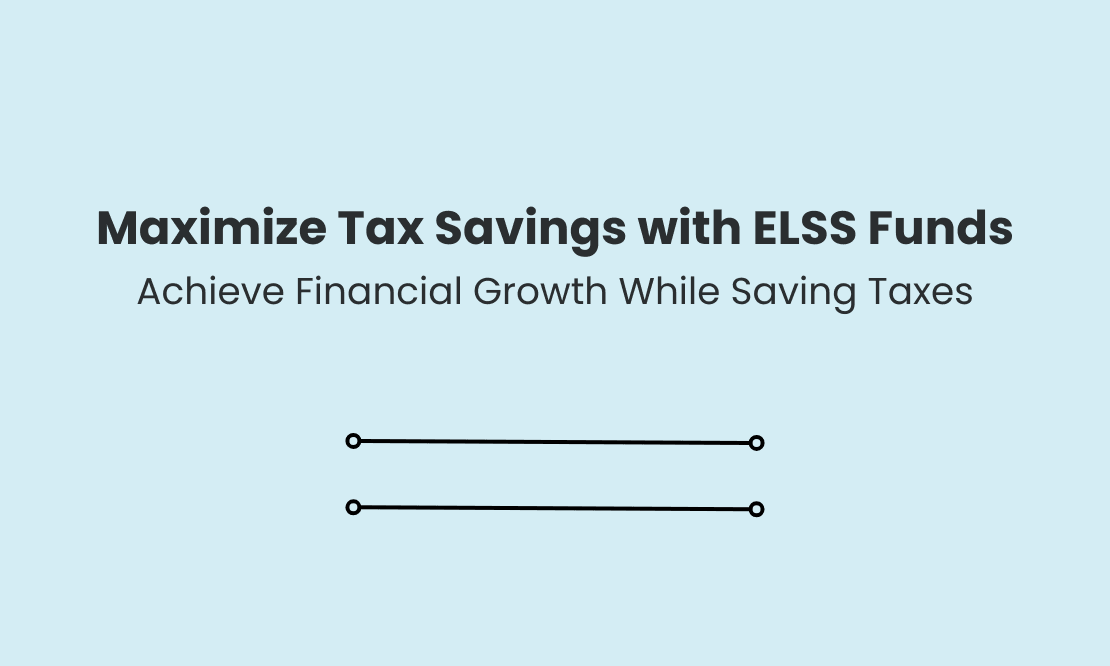ELSS Funds for Tax Saving
Equity Linked Savings Schemes (ELSS) are a popular investment option for those looking to save taxes and grow their wealth. These mutual funds invest primarily in equities (stocks) and offer significant tax-saving benefits under Section 80C of the Income Tax Act. ELSS funds not only help you reduce your taxable income but also provide the potential for high returns over time. Here’s a simple guide to understanding ELSS and how they can help you save taxes.
What Are ELSS Funds?
ELSS funds are mutual funds that primarily invest in stocks and equity-related instruments. They qualify for tax deductions under Section 80C of the Income Tax Act, allowing you to claim deductions of up to ₹1.5 lakh per financial year. The most attractive feature of ELSS is its 3-year lock-in period, which is the shortest among other Section 80C tax-saving instruments like PPF (15 years) and NSC (5-10 years).
How ELSS Funds Help Save Tax
When you invest in an ELSS fund, you can claim a tax deduction of up to ₹1.5 lakh, thus reducing your taxable income. For example, if your annual income is ₹8 lakh and you invest ₹1.5 lakh in ELSS, your taxable income will be reduced to ₹6.5 lakh, lowering the tax you pay.
Moreover, ELSS funds offer the benefit of tax-free capital gains if the investment is held for more than 3 years. The long-term capital gains (LTCG) up to ₹1 lakh per year are tax-free. Any gains exceeding this threshold are taxed at a rate of 10%. This makes ELSS a tax-efficient way to grow your money.
Why Choose ELSS Funds?
Higher Returns Potential
Unlike traditional tax-saving instruments like PPF or NSC, ELSS funds invest in the stock market, which offers the potential for higher returns. Historically, ELSS funds have delivered returns of around 12-15% per annum. While returns are not guaranteed and depend on market performance, the stock market’s long-term growth potential makes ELSS an attractive option.
Short Lock-In Period
ELSS funds come with a 3-year lock-in period, meaning your investment will be locked in for just three years. This is significantly shorter than other Section 80C options like PPF, which has a 15-year lock-in period. The shorter lock-in period provides more flexibility in accessing your funds after the 3-year period.
Tax-Free Gains
Another key benefit of ELSS is the tax-free long-term capital gains. If your gains from the investment are below ₹1 lakh in a year, they are completely tax-free. If the gains exceed ₹1 lakh, only the excess amount is taxed at 10%, which is lower than the tax rate on regular income.
SIP Option
ELSS allows you to invest through Systematic Investment Plans (SIP), where you can contribute small amounts regularly (monthly or quarterly) rather than investing a lump sum. SIPs offer the benefit of rupee cost averaging, which helps reduce the impact of market volatility. They also make it easier to manage your finances by spreading the investment over time.
How to Invest in ELSS Funds
Investing in ELSS is simple. Choose a fund based on its past performance, fund manager’s experience, and expense ratio. You can invest through SIP or lump sum. To get started, complete the KYC process (Know Your Customer), which can be done online or offline. After that, monitor your investment regularly to ensure it is aligned with your financial goals.
Conclusion
ELSS funds offer a combination of tax-saving, high returns, and tax-free capital gains, making them a smart choice for investors who want to reduce their tax liability and build wealth over time. While they come with some risk due to market exposure, the 3-year lock-in period and potential for growth make them an attractive option. By investing in ELSS through SIPs or lump sums, you can save on taxes while benefiting from the growth potential of the stock market.









